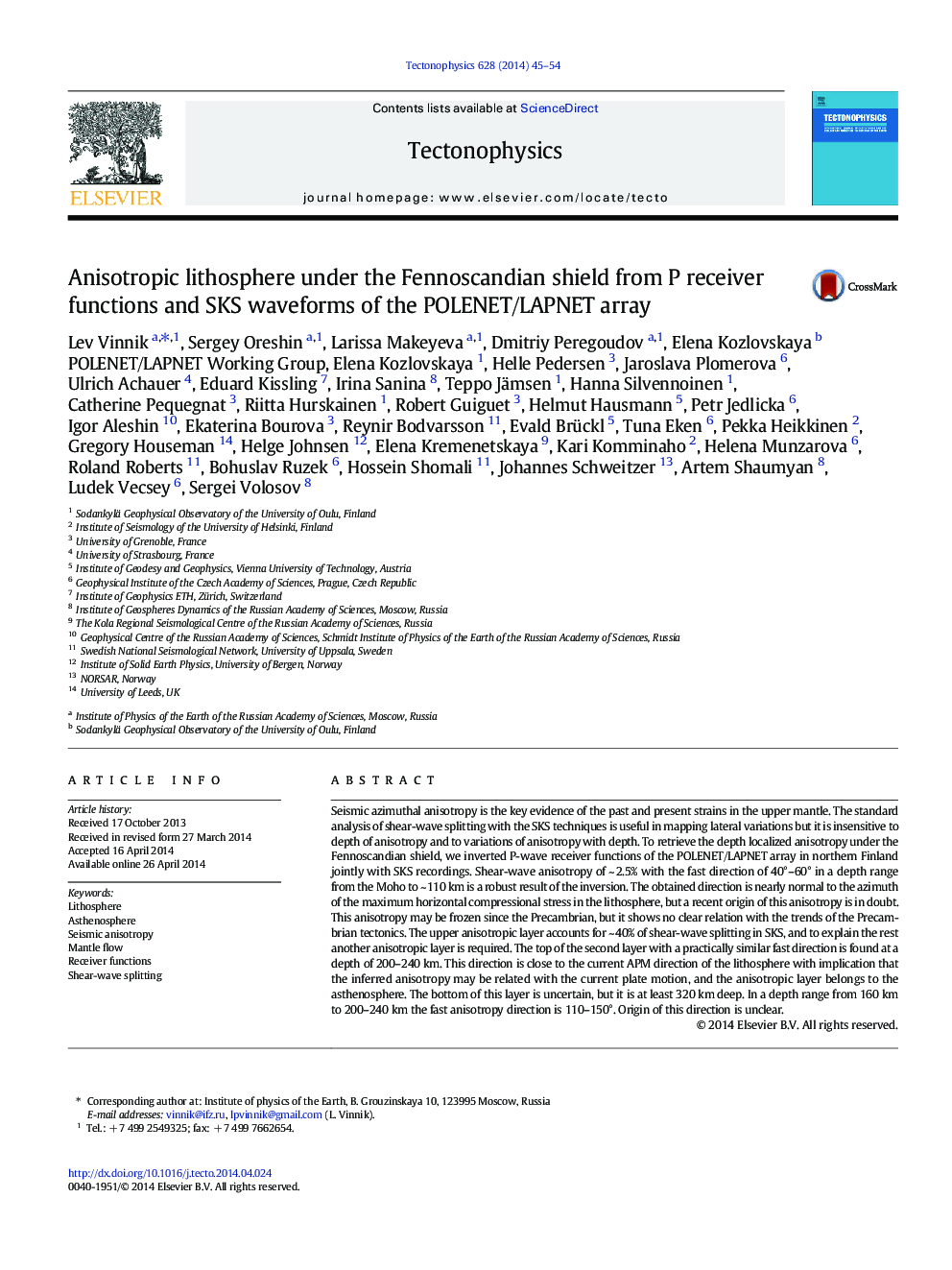| کد مقاله | کد نشریه | سال انتشار | مقاله انگلیسی | نسخه تمام متن |
|---|---|---|---|---|
| 4691929 | 1636763 | 2014 | 10 صفحه PDF | دانلود رایگان |

• Inversion of receiver functions and SKS for depth localized azimuthal anisotropy
• Anisotropy of 2.5 % with a fast direction of 40-60° from the Moho to 110 km depth
• Anisotropy related with the APM at depths from 200-240 km to at least 320 km depth
• Anisotropy with a fast direction of ~150° between 160 km and 200-240 km depths
Seismic azimuthal anisotropy is the key evidence of the past and present strains in the upper mantle. The standard analysis of shear-wave splitting with the SKS techniques is useful in mapping lateral variations but it is insensitive to depth of anisotropy and to variations of anisotropy with depth. To retrieve the depth localized anisotropy under the Fennoscandian shield, we inverted P-wave receiver functions of the POLENET/LAPNET array in northern Finland jointly with SKS recordings. Shear-wave anisotropy of ~ 2.5% with the fast direction of 40°–60° in a depth range from the Moho to ~ 110 km is a robust result of the inversion. The obtained direction is nearly normal to the azimuth of the maximum horizontal compressional stress in the lithosphere, but a recent origin of this anisotropy is in doubt. This anisotropy may be frozen since the Precambrian, but it shows no clear relation with the trends of the Precambrian tectonics. The upper anisotropic layer accounts for ~ 40% of shear-wave splitting in SKS, and to explain the rest another anisotropic layer is required. The top of the second layer with a practically similar fast direction is found at a depth of 200–240 km. This direction is close to the current APM direction of the lithosphere with implication that the inferred anisotropy may be related with the current plate motion, and the anisotropic layer belongs to the asthenosphere. The bottom of this layer is uncertain, but it is at least 320 km deep. In a depth range from 160 km to 200–240 km the fast anisotropy direction is 110–150°. Origin of this direction is unclear.
Journal: Tectonophysics - Volume 628, 30 July 2014, Pages 45–54